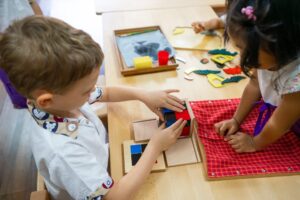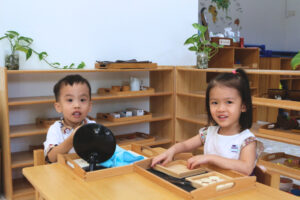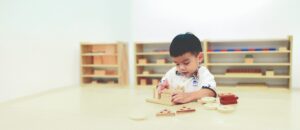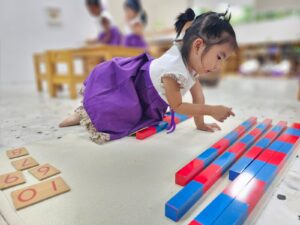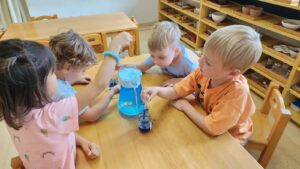Colours are everywhere and it is important for your child to explore colours. Early identification of colours helps to create the cognitive link between visual clues and words. Some other benefits of colour recognition include: boosting language skills because learning to identify and describe colours improves the child’s ability to communicate and express themselves.
Learning colours strengthens math skills, helping a child learn how to sort, organize, categorize, and compare. In fact, the ability to identify colours is considered a marker and milestone in a child’s cognitive process¹.
4 Beautiful Locations Islandwide
This Montessori at Home blog explores the world of Montessori colours through a fun and engaging activity designed especially for infants and Nido-aged children. It’s a simple, hands-on way for parents to support early colour recognition and sensory development at home.
From birth to age 3, your child’s brain is developing more rapidly than at any other time. More learning is taking place now than at any other stage of development. Dr. Maria Montessori created a philosophy of education that begins at birth, when infants’ minds are already busy absorbing their environment and learning about the world. This activity is an easy way to introduce colour to little ones, and it makes a very pretty craft as well!
Start by introducing the primary colours—red, blue, and yellow—before gradually exploring secondary colours. Be sure to actively involve your child in the process! For instance, let them help with colour mixing and observe how new shades are created—it’s a magical and memorable experience. When it comes to painting tools, think beyond the paintbrush. In this activity, we used a flower as a fun and unexpected painting medium.
What other creative materials might you have at home that your child can explore?
Montessori Colours Exploration
Materials Needed
- Baby wipes
- Flower stalk (we opted for a big and many petaled rose here)
- Rubber bands
- Paint
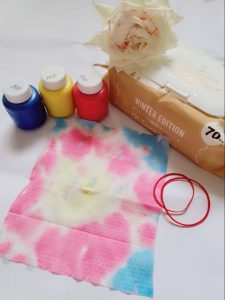
Steps:
Step 1. Lay the working materials out
Step 2. Introduce the Montessori colours that are going to be used in the activity to your child

Step 3. Using the flower stalk, encourage your child to paint on the wet wipe. You can tie the wipe at both ends or open it up for your child to paint on it.
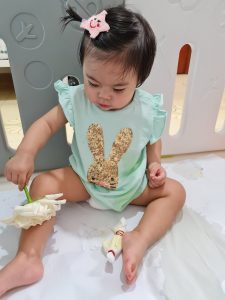
Step 4. Talk to your child about what is happening. Early language exposure is very important for developing infants and helps them to develop linguistically.

Step 5. Once their masterpieces have been created, remember to encourage not praise! Do they feel proud of what they have made? Perhaps there is somewhere at home that they can display their work?

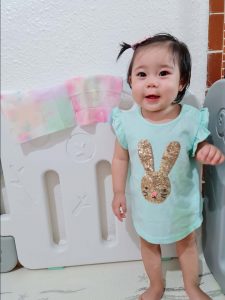
Super simple but effective! Try the different iterations and levels at your own leisure. As they progress from infant to toddler, we recommend moving on to the next stage of sorting colours with our Montessori Colours Sorting Fun at Home activity.

